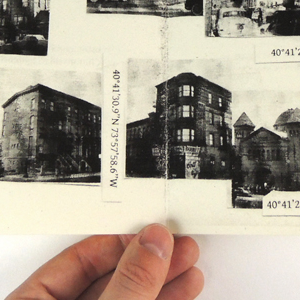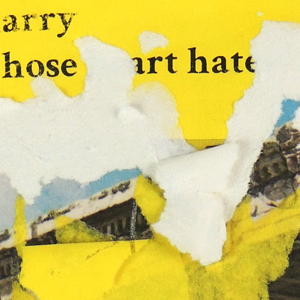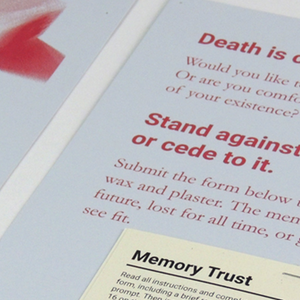Transtemporal Guide, 1910 – Present
Soon We Will Be Gone. Destruction is the inevitable fate of most existent things. What we create today will remain only in part. Through the holes created by degradation, new narratives and mystery arise.
One of three parts, The Transtemporal Guide to Pratt and Clinton Hill Neighborhood is a print and digital treasure map of past buildings, businesses, and activity in the area.
Based on historical photographs of Clinton Hill, the guide takes us to sixteen destinations and narrates a history of the locations, highlighting what remains unchanged, and what has been altered beyond recognition. By following the hints in the print guide and using the website as a compass, the transtemporal tourist can find each point of interest and its corresponding audio-guide, which activates using gps location. The street map provided allows the tourist to mark each location they discover.
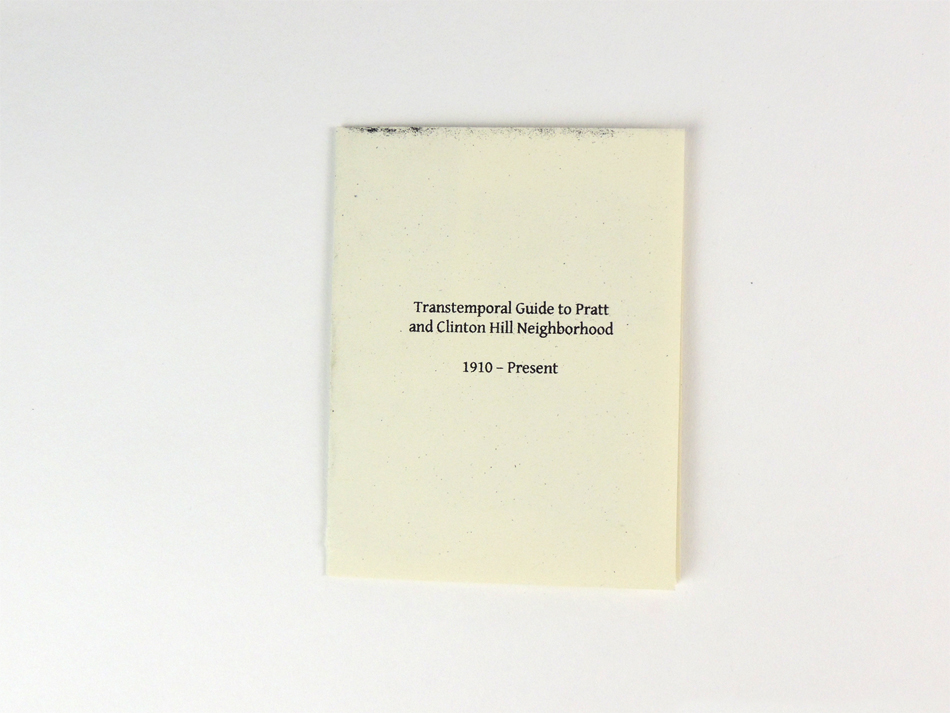

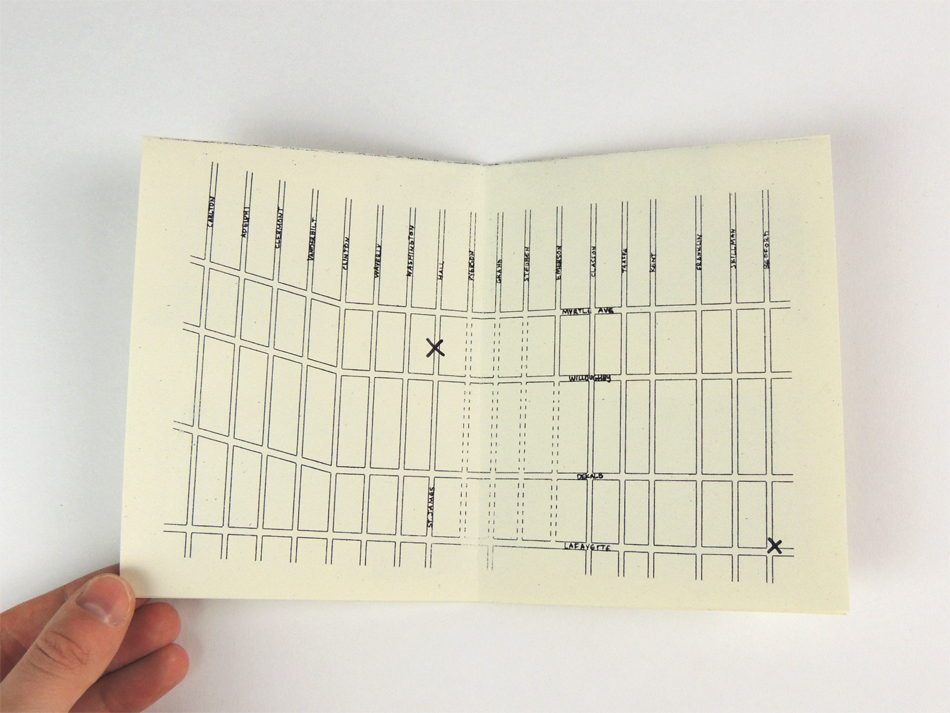
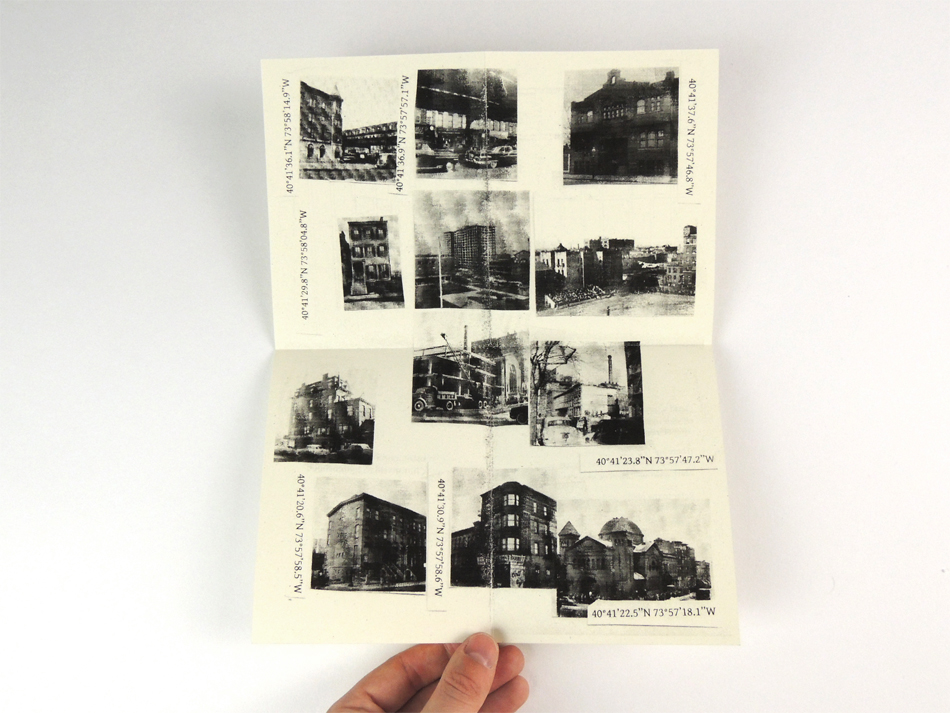
The print map, with two points of interest marked, and clues within the fold. Historical images are from Brooklyn Visual Heritage.
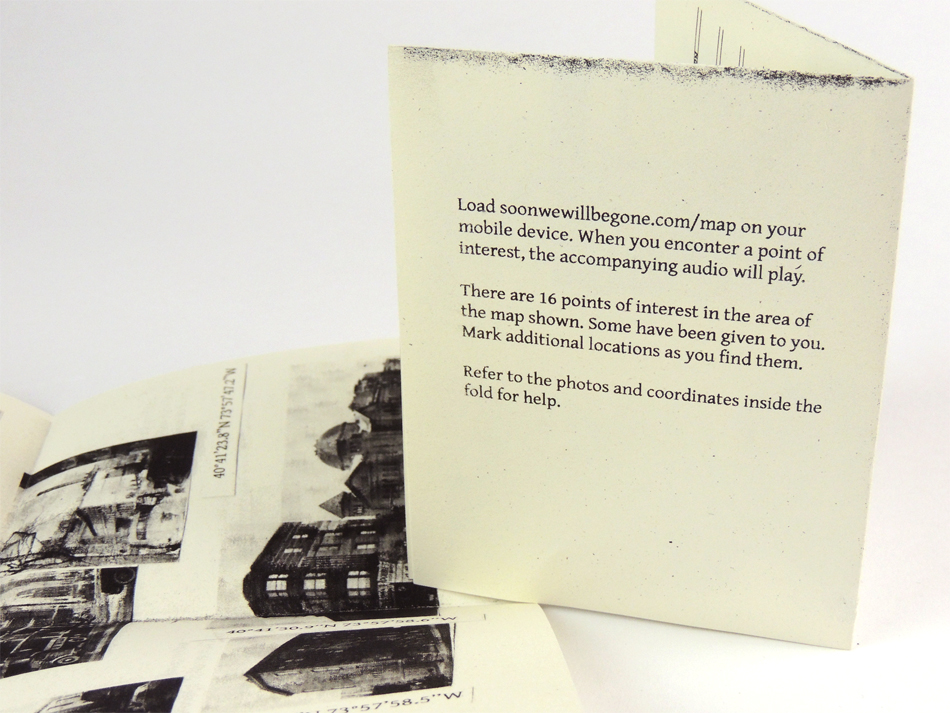

The accompanying website displays your location and notifies you when you reach a point of interest. From there you can play the audioguide for the location. Tap to resume your walk. The website was programmed with javascript and may be accessed here.
The short video below shows the guide in action.
Soon We Will Be Gone
Project Statement
I began with the idea of destruction, specifically the activities of ISIS destroying World Heritage Sites. Disheartened by the general state of the world, I wanted to see if there could be some positive response towards destruction to undermine acts of cultural cleansing.
Destruction of all scales is innate to human experience, from forgetting details of the day, to losing physical property, to death, to war, to natural disaster. I began to explore human and natural disaster throughout history as a way to understand current conflicts. However placing current events in a long history of destruction only made the situation seem more dark and futile.
I then researched artists that use destruction. For Jean Tinguely’s Homage to New York, a self- destructing kinetic sculpture, “Utter destruction is necessary because [it] is grandiose, spectacular.” The level of destruction testifies to its magnificent existence.
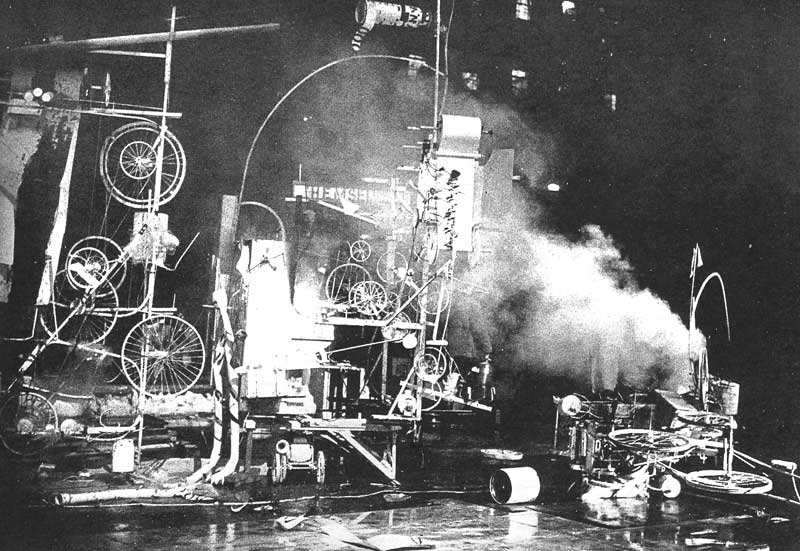
This applies to ISIS destroying cultural heritage — they affirm the value of an artifact by choosing to publicly destroy it — but the likening to Tinguely’s work ends there.
For humans, a grand death does not correspond to a grand life, and when things or people are destroyed against their will, as they almost always are, it is not something to celebrate.
From looking at Tinguely and the work of other artists (Alexander Gutke “The White Light of the Void”, Ariel Schlesinger “Bubble Machine”, Kris Martin “100 years” and “For Whom...”) I became interested in how material corresponds to the idea of destruction.
I turned to the idea of individual memory and forgetting as a kind of destruction. The themes of interest to me were memory, individuality, the inevitability of destruction, natural deterioration, and finding something positive in the midst of these things. This lead to my final proposal:
Destruction is the inevitable fate of most existent things. What we create today will remain only in part. Through the holes created by degradation, new narratives and mystery arise.
Soon We Will Be Gone is a three part exploration of this idea.
